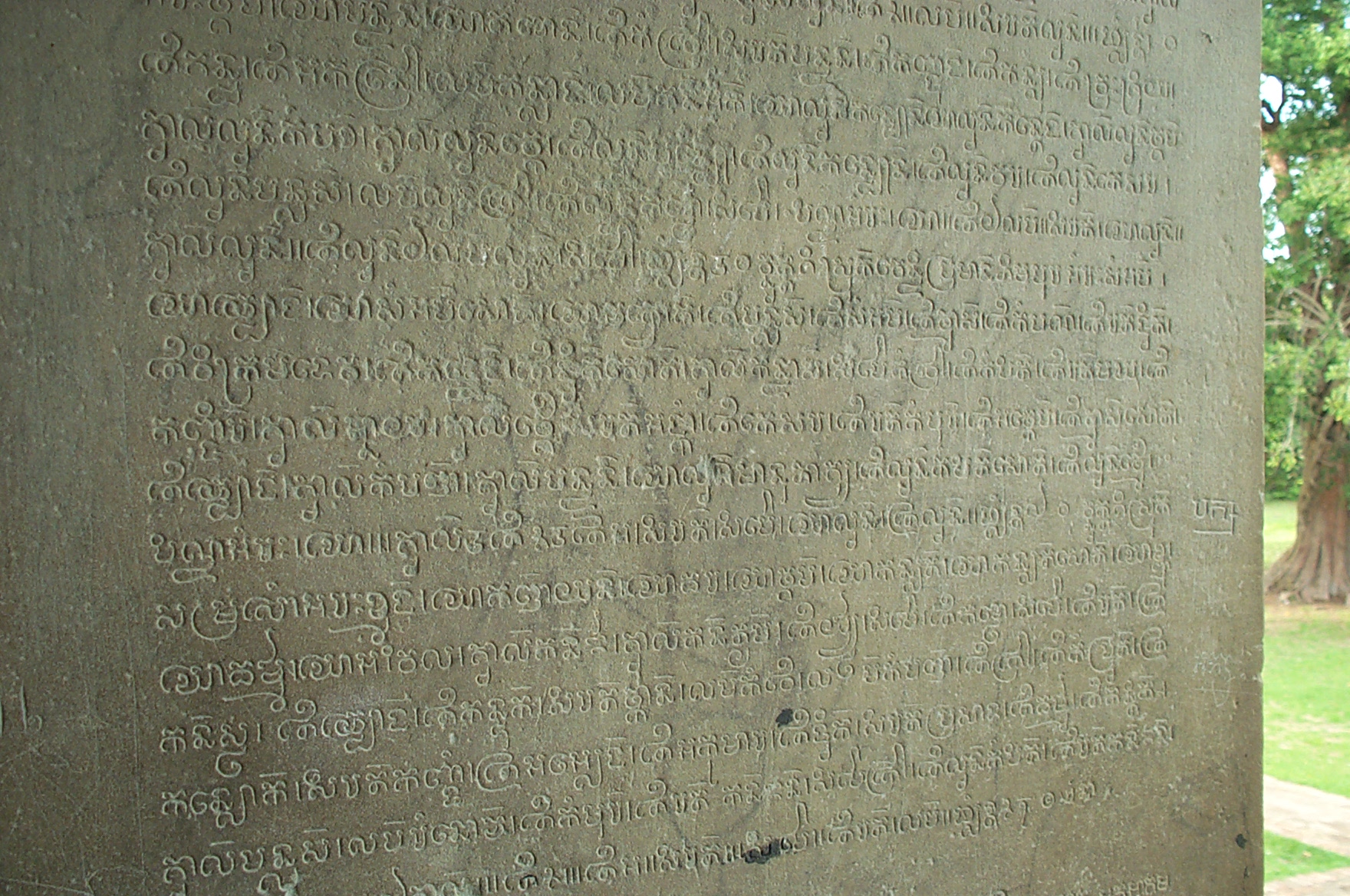|
K5 Plan
The K5 Plan ( km, ផែនការក៥), K5 Belt or K5 Project, also known as the Bamboo Curtain, was an attempt between 1985 and 1989 by the government of the People's Republic of Kampuchea to seal Khmer Rouge guerrilla infiltration routes into Cambodia by means of trenches, wire fences, and minefields along virtually the entire Thai–Cambodian border.Margaret Slocomb, ''The People's Republic of Kampuchea, 1979-1989: The revolution after Pol Pot'' Background After the defeat of Democratic Kampuchea in 1979, the Khmer Rouge fled Cambodia quickly. Protected by the Thai state, and with powerful foreign connections, Pol Pot's virtually intact militia of about 30,000 to 35,000 troops regrouped and reorganized in forested and mountainous zones behind the Thai-Cambodian border. During the early 1980s Khmer Rouge forces showed their strength in Thailand, inside the refugee camps near the border, and were able to receive a steady and abundant supply of military equipment. The ... [...More Info...] [...Related Items...] OR: [Wikipedia] [Google] [Baidu] |
Khmer Alphabet
Khmer script ( km, អក្សរខ្មែរ, )Huffman, Franklin. 1970. ''Cambodian System of Writing and Beginning Reader''. Yale University Press. . is an abugida (alphasyllabary) script used to write the Khmer language, the official language of Cambodia. It is also used to write Pali in the Buddhist liturgy of Cambodia and Thailand. Khmer is written from left to right. Words within the same sentence or phrase are generally run together with no spaces between them. Consonant clusters within a word are "stacked", with the second (and occasionally third) consonant being written in reduced form under the main consonant. Originally there were 35 consonant characters, but modern Khmer uses only 33. Each character represents a consonant sound together with an inherent vowel, either ''â'' or ''ô''; in many cases, in the absence of another vowel mark, the inherent vowel is to be pronounced after the consonant. There are some independent vowel characters, but vowel sounds are ... [...More Info...] [...Related Items...] OR: [Wikipedia] [Google] [Baidu] |
Hanoi
Hanoi or Ha Noi ( or ; vi, Hà Nội ) is the capital and second-largest city of Vietnam. It covers an area of . It consists of 12 urban districts, one district-leveled town and 17 rural districts. Located within the Red River Delta, Hanoi is the cultural and political centre of Vietnam. Hanoi can trace its history back to the third century BCE, when a portion of the modern-day city served as the capital of the historic Vietnamese nation of Âu Lạc. Following the collapse of Âu Lạc, the city was part of Han China. In 1010, Vietnamese emperor Lý Thái Tổ established the capital of the imperial Vietnamese nation Đại Việt in modern-day central Hanoi, naming the city Thăng Long (literally 'Ascending Dragon'). Thăng Long remained Đại Việt's political centre until 1802, when the Nguyễn dynasty, the last imperial Vietnamese dynasty, moved the capital to Huế. The city was renamed Hanoi in 1831, and served as the capital of French Indochina from 1902 to 1945. O ... [...More Info...] [...Related Items...] OR: [Wikipedia] [Google] [Baidu] |
Communist Party Of Kampuchea
The Communist Party of Kampuchea (CPK),, Romanization of Khmer#UNGEGN, UNGEGN: , Romanization of Khmer#ALA-LC Romanization Tables, ALA-LC: ; french: Parti communiste du Kampuchea also known as the Khmer Communist Party,"Cambodia and the Khmer People's Revolutionary Party (KPRP), Appendix B - Major Political and Military Organizations" Country Data. . was a communist party in Cambodia. Its leader was Pol Pot and its members were generally known as the Khmer Rouge (Red Khmer). Originally founded in 1951, the party was split into pro-China, Chinese and pro-Soviet Union, Soviet factions as a result of the Sino–Soviet split with the former being the Pol Pot faction, and the Cambodian People's Party, latter adopting a more Revi ... [...More Info...] [...Related Items...] OR: [Wikipedia] [Google] [Baidu] |
Military Strategy
Military strategy is a set of ideas implemented by military organizations to pursue desired strategic goals. Derived from the Greek word '' strategos'', the term strategy, when it appeared in use during the 18th century, was seen in its narrow sense as the "art of the general", or "'the art of arrangement" of troops. Military strategy deals with the planning and conduct of campaigns, the movement and disposition of forces, and the deception of the enemy. The father of Western modern strategic studies, Carl von Clausewitz (1780–1831), defined military strategy as "the employment of battles to gain the end of war." B. H. Liddell Hart's definition put less emphasis on battles, defining strategy as "the art of distributing and applying military means to fulfill the ends of policy". Hence, both gave the pre-eminence to political aims over military goals. Sun Tzu (544–496 BC) is often considered as the father of Eastern military strategy and greatly influenced Chinese, Japanese ... [...More Info...] [...Related Items...] OR: [Wikipedia] [Google] [Baidu] |
Ecoregion
An ecoregion (ecological region) or ecozone (ecological zone) is an ecologically and geographically defined area that is smaller than a bioregion, which in turn is smaller than a biogeographic realm. Ecoregions cover relatively large areas of land or water, and contain characteristic, geographically distinct assemblages of natural communities and species. The biodiversity of flora, fauna and ecosystems that characterise an ecoregion tends to be distinct from that of other ecoregions. In theory, biodiversity or conservation ecoregions are relatively large areas of land or water where the probability of encountering different species and communities at any given point remains relatively constant, within an acceptable range of variation (largely undefined at this point). Three caveats are appropriate for all bio-geographic mapping approaches. Firstly, no single bio-geographic framework is optimal for all taxa. Ecoregions reflect the best compromise for as many taxa as possible. Se ... [...More Info...] [...Related Items...] OR: [Wikipedia] [Google] [Baidu] |
Land Degradation
Land degradation is a process in which the value of the biophysical environment is affected by a combination of human-induced processes acting upon the land. It is viewed as any change or disturbance to the land perceived to be deleterious or undesirable. Natural hazards are excluded as a cause; however human activities can indirectly affect phenomena such as floods and bush fires. This is considered to be an important topic of the 21st century due to the implications land degradation has upon agricultural productivity, the environment, and its effects on food security. It is estimated that up to 4% of the world's agricultural land is seriously degraded. According to the Special Report on Climate Change and Land of the Intergovernmental Panel on Climate Change: "About a quarter of the Earth's ice-free land area is subject to human-induced degradation (medium confidence). Soil erosion from agricultural fields is estimated to be currently 10 to 20 times (no-tillage) to mor ... [...More Info...] [...Related Items...] OR: [Wikipedia] [Google] [Baidu] |
Deforestation
Deforestation or forest clearance is the removal of a forest or stand of trees from land that is then converted to non-forest use. Deforestation can involve conversion of forest land to farms, ranches, or urban use. The most concentrated deforestation occurs in tropical rainforests. About 31% of Earth's land surface is covered by forests at present. This is one-third less than the forest cover before the expansion of agriculture, a half of that loss occurring in the last century. Between 15 million to 18 million hectares of forest, an area the size of Bangladesh, are destroyed every year. On average 2,400 trees are cut down each minute. The Food and Agriculture Organization of the United Nations defines deforestation as the conversion of forest to other land uses (regardless of whether it is human-induced). "Deforestation" and "forest area net change" are not the same: the latter is the sum of all forest losses (deforestation) and all forest gains (forest expansion) in a gi ... [...More Info...] [...Related Items...] OR: [Wikipedia] [Google] [Baidu] |
Ecological Disaster
An environmental disaster or ecological disaster is defined as a catastrophic event regarding the natural environment that is due to human activity.Jared M. Diamond, '' Collapse: How Societies Choose to Fail or Succeed'', 2005 This point distinguishes environmental disasters from other disturbances such as natural disasters and intentional acts of war such as nuclear bombings. Environmental disasters show how the impact of humans' alteration of the land has led to widespread and/or long-lasting consequences. These disasters have included deaths of wildlife, humans and plants, or severe disruption of human life or health, possibly requiring migration. Environmental disasters Environmental disasters historically have affected agriculture, biodiversity including wildlife, the economy and human health. The most common causes include pollution that seeps into groundwater or a body of water, emissions into the atmosphere and depletion of natural resources, industrial activity or ag ... [...More Info...] [...Related Items...] OR: [Wikipedia] [Google] [Baidu] |
Ecology
Ecology () is the study of the relationships between living organisms, including humans, and their physical environment. Ecology considers organisms at the individual, population, community, ecosystem, and biosphere level. Ecology overlaps with the closely related sciences of biogeography, evolutionary biology, genetics, ethology, and natural history. Ecology is a branch of biology, and it is not synonymous with environmentalism. Among other things, ecology is the study of: * The abundance, biomass, and distribution of organisms in the context of the environment * Life processes, antifragility, interactions, and adaptations * The movement of materials and energy through living communities * The successional development of ecosystems * Cooperation, competition, and predation within and between species * Patterns of biodiversity and its effect on ecosystem processes Ecology has practical applications in conservation biology, wetland management, natural resource managemen ... [...More Info...] [...Related Items...] OR: [Wikipedia] [Google] [Baidu] |
Antipersonnel Mine
Anti-personnel mines are a form of Land mine, mine designed for use against humans, as opposed to anti-tank mines, which are designed for use against vehicles. Anti-personnel mines may be classified into blast mines or fragmentation mines; the latter may or may not be a bounding mine. The mines are often designed to injure, not kill, their victims to increase the logistical (mostly medical) support required by enemy forces that encounter them. Some types of anti-personnel mines can also damage the tracks on armoured vehicles or the tires of wheeled vehicles. The International Campaign to Ban Landmines has sought to ban mines culminating in the 1997 Ottawa Treaty, although this treaty has not yet been accepted by over 30 countries. Use Anti-personnel mines are used in a similar manner to anti-tank mines, in static "mine fields" along national borders or in defense of strategic positions as described in greater detail in the land mine article. What makes them different from m ... [...More Info...] [...Related Items...] OR: [Wikipedia] [Google] [Baidu] |
Antitank Mine
An anti-tank mine (abbreviated to "AT mine") is a type of land mine designed to damage or destroy vehicles including tanks and armored fighting vehicles. Compared to anti-personnel mines, anti-tank mines typically have a much larger explosive charge, and a fuze designed to be triggered by vehicles or, in some cases, remotely or by tampering with the mine. History First World War The first anti-tank mines were improvised during the First World War as a countermeasure against the first tanks introduced by the British towards the end of the war. Initially they were nothing more than a buried high-explosive shell or mortar bomb with its fuze upright. Later, purpose-built mines were developed, including the Flachmine 17, which was simply a wooden box packed with explosives and triggered either remotely or by a pressure fuze. By the end of the war, the Germans had developed row mining techniques, and mines accounted for 15% of U.S. tank casualties during the Battle of Saint-Mih ... [...More Info...] [...Related Items...] OR: [Wikipedia] [Google] [Baidu] |





.jpg)
